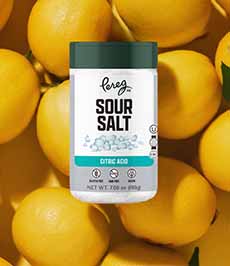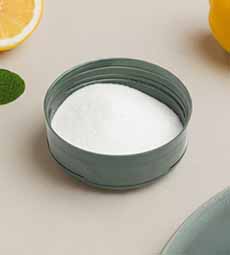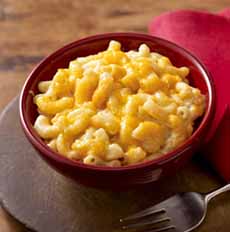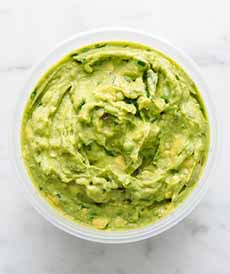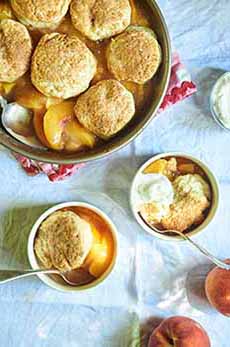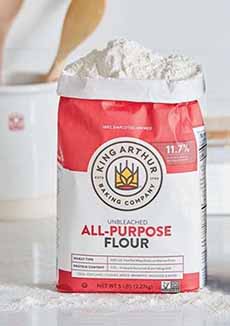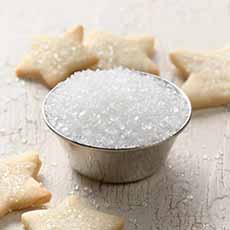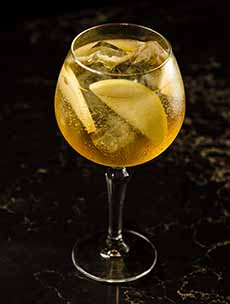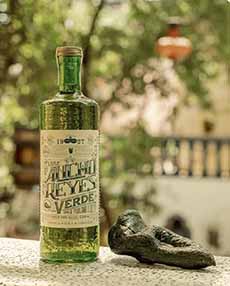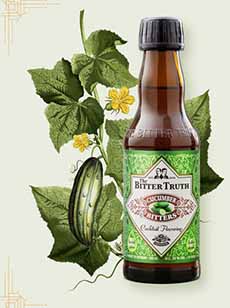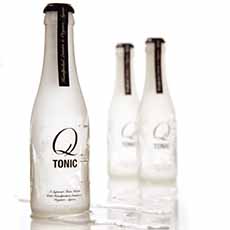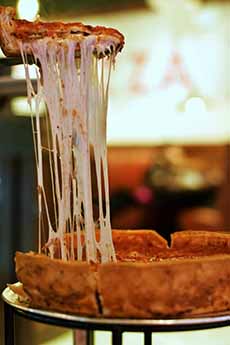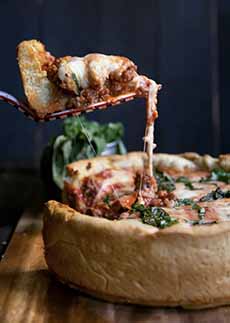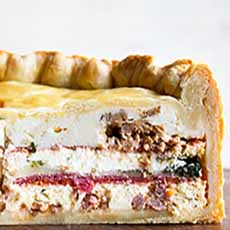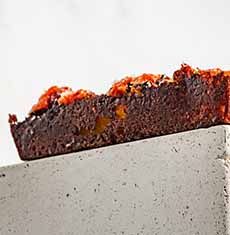|
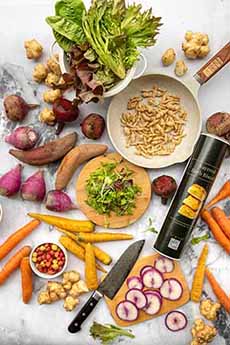
[1] The splendid Eat The Rainbow box from Farmer Jones Farm (photos #1, #2, #3, #4 © Hannah Kaminsky | Bittersweet Blog).

[2] Oca and sunchokes. Oka, cultivated by the Incas like potatoes, are an underground stem tuber that originated in the high altitudes of the Andes Mountains. Sunchoke, also called Jerusalem artichoke, is a tuber, the root of a species of sunflower native to central North America. Both can be cooked, eaten raw in salads and slaws, or pickled.
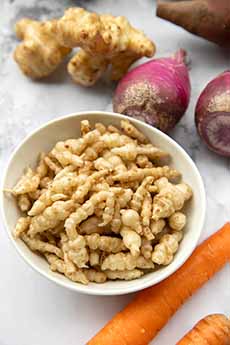
[3] Crosnes (pronunced “crones”), also known as Chinese or Japanese artichoke, is a root vegetable that can be eaten raw, pickled, dried or cooked. Here’s more about them.
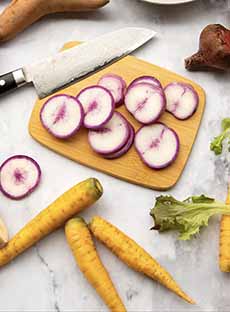
[4] Purple daikon radish is more rare than the conventional long white Japanese radish. Both can be enjoyed raw, pickled, or cooked.
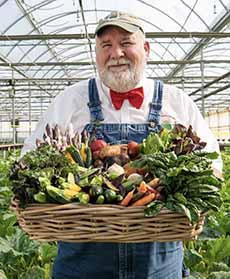
[5] Farmer Lee Jones (photos #5 and #6 © Farmer Jones Farm).

[6] Buttery biscuits to eat with your veggies. With each flaky bite, you’ll find earthy notes of fennel, parsley, chervil, and chives.
|
|
With Mother’s Day and Father’s Day on the radar, here’s an exciting gift for any cook who knows the difference between good and great: The “Eat The Rainbow” box from Farmer Jones Farm.
For more than 40 years, The Chef’s Garden has been growing fine and specialty* vegetables—heirloom varieties, herbs, microgreens, and more.
Their produce has been sold exclusively to top chefs at the world’s most discriminating restaurants.
It’s now available for home delivery from the Jones Family Farm to you and to any lucky home cooks you would like to gift.
BETTER FLAVOR & BETTER NUTRITION!
You’ll delight not only in the freshest vegetables—pulled from the earth to fill your order—but in those that taste even better than those a home garden.
The vegetables are grown to taste better, by a devoted team under the guidance of “Farmer” Lee Jones (photo #5) and Bob Jones, Jr. They helm both The Chef’s Garden and the Jones Family Farm.
How are they are grown to taste better…and be more nutritious, too?
Following in the footsteps of their father, Bob Jones, Sr., the farms employ traditional regenerative farming methods combined with innovative technology.
A dedicated research center at the farm tests everything—seeds, soil, water, and other factors—to exact the finest tastes.
While everything is grown to maximize flavor, the efforts have delivered a huge bump in nutritional value as well: 30%, 50%, even 100% increase over the USDA averages.
REGENERATIVE FARMING MAKES A DIFFERENCE
There’s more about regenerative farming below, but in a nutshell, it involves using special techniques to create healthy soil, which in turn grows healthy crops that provide the maximum in flavor and nutrition.
The crops are grown slowly and gently in full accord with Mother Nature.
Regenerative farming is at the heart and soul of Farmer Jones Farm and The Chef’s Garden.
GET YOUR “EAT THE RAINBOW BOX”
Head to FarmerJonesFarm.com.
You can make a one-time purchase or have a box sent weekly or monthly for as long as you like.
The box will always include the best of the week, a mix of the most delicious “familiar” vegetables plus something new to try. A recent box we had included:
Bull’s Blood Beets
Carrots (two heirloom varieties, orange and yellow)
Crosnes (photo #3)
Microgreens
Mixed sweet potatoes
Peruvian Oca (photo #2)
Purple daikon (ninja radishes—photo #4)
Red leaf lettuces
Sunchokes (Jerusalem artichokes)
Plus:
A cylinder of handmade herbed biscuits—with a QR code to the recipe so you can make more (photo #6)
While you’re on the website, check out these farm-made goodies:
Carrot Marmalade
Pepper Marmalade
Tomato Marmalade
Viola and Champagne Jelly
WHAT IS REGENERATIVE FARMING?
Traditional regenerative farming methods comprise a variety of practices aimed at restoring and enhancing the health of soil and the agricultural ecosystem overall, while promoting sustainable food production. Some of these methods include:
Crop Rotation: Different crops have different nutrient needs and growth patterns. Rotating them can help prevent soil depletion and pest buildup while improving soil fertility.
Cover Cropping: Planting cover crops, such as legumes or grasses, between cash crops (those that will be sold) helps to protect and improve soil health. Cover crops reduce erosion, suppress weeds, and add organic matter to the soil when they decompose.
No-Till or Reduced Tillage: Tillage is the agricultural preparation of soil by mechanical agitation such as digging, stirring, and overturning. Traditional agriculture often involves intensive tillage, which can lead to soil erosion, loss of soil structure, and decreased soil fertility. No-till or reduced tillage minimizes soil disturbance, preserves soil structure and promotes the activity of soil organisms.
Agroforestry: Integrating trees and shrubs into agricultural systems can engender improved soil health, increased biodiversity, and enhanced resilience to climate change.
Composting and Mulching: Recycling organic matter through composting helps to increase soil organic carbon, which in turn improves soil structure, fertility, and moisture retention. Mulching with organic materials such as straw, leaves, or crop residues helps to suppress weeds, conserve soil moisture, and regulate soil temperature.
Integrated Pest Management: IPM involves using a combination of biological and mechanical methods to manage pests, diseases, and weeds, minimizing reliance on synthetic pesticides and herbicides. This is done through the use of natural predators and beneficial organisms as preventatives.
Water Management: Water conservation techniques such as rainwater harvesting, drip irrigation, and contour farming help to reduce water usage, minimize soil erosion, and improve water quality.
Livestock Integration: Integrating livestock into cropping systems provides multiple benefits, including nutrient cycling, weed and pest control, and diversification of farm income. Managed grazing systems, rotational grazing, and mixed crop-livestock systems are examples of livestock integration practices.
These traditional regenerative farming methods focus on working with natural processes to enhance soil health, biodiversity, and ecosystem resilience while promoting sustainable food production for current and future generations.
> The history of agriculture.
________________
*Specialty vegetables are those introduced or reintroduced that are native to Africa, the Caribbean, Europe, Latin America, and the Pacific Basin. Examples include the crones and oca shown in the photos, cipolines, daikon, elephant garlic, Japanese eggplant, squash blossoms, and heirloom varieties of traditional vegetables. Specialty fruit examples include cherimoya, currants, dragonfruit, gooseberries, lingonberries, litchi, and startfruit, among others.
|
